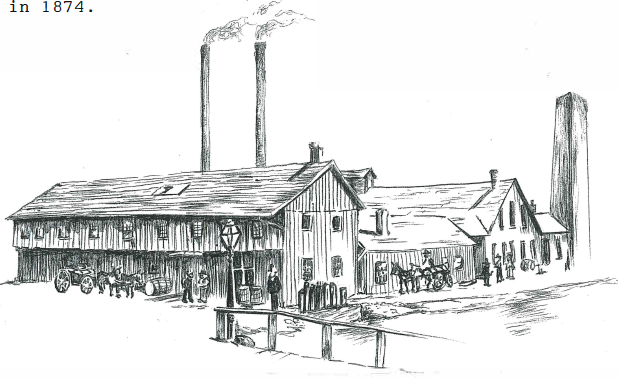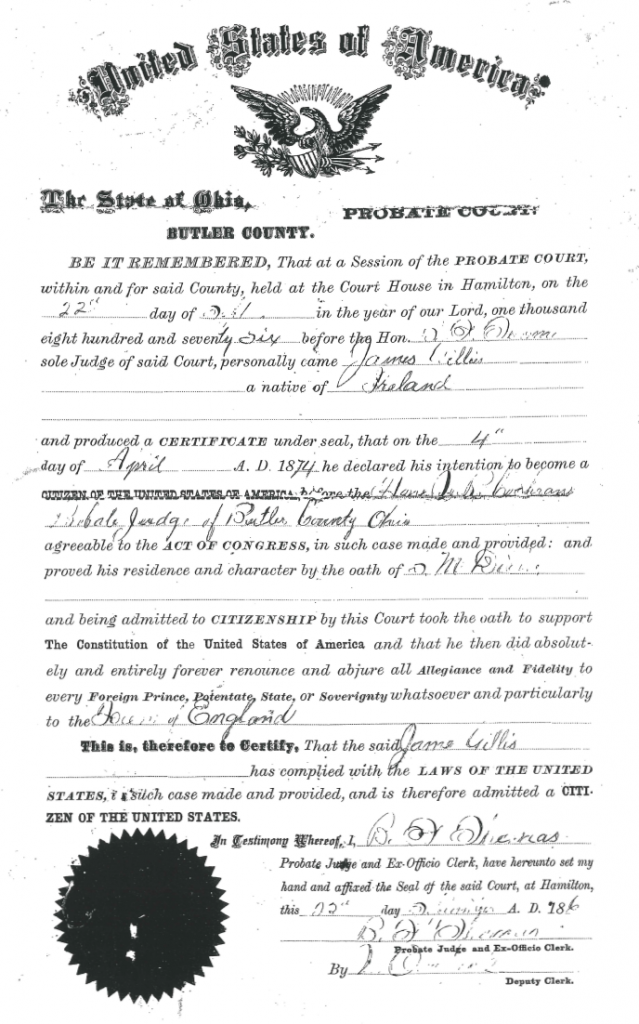When James Gillies decided to leave Dublin, Ireland, he thought of going to Australia but upon arriving at the embarkation point he discovered the ship for Australia would not be leaving until the next day. However, a war ship for America was leaving right away; so James changed his mind and sailed to America … It was a time of mass immigration, the terrible potato famine had decimated Irish families and in order for the people to survive many of the youth had to leave.

James was born on January 8, 1834, the son of Thomas Galeesen and Catherine Daughterty. The spelling of James name is listed as Gillies on his naturalization papers but employers later spelled it Galeese. He arrived in America around 1865 and lived in Brookline, Connecticut, where he married Mary MacKenzie. There he supported his wife by working on a farm and later a papermill. When the papermill moved to Middletown, Ohio a hard working James moved his wife and three small children there, too. In Middletown, James applied for his American citizenship in 1874.
James Galeese was a big hearted man and a good provider. He would open his arms to any new Irish immigrant asking them to stay in his home until they found a place of their own. Unlike most Irish men he never drank alcohol. Sometimes stern with his children, James never let them run about like the other youngsters. According to granddaughter, Florence Minch, James’s children were often teased by playmates, “Jimmy Galeese, the daycent (decent) man!”
The Galeeses lived in an area of Middletown called “Dublin”. Here James owned three houses on Webster Street, two of which he rented. On St. Patrick’s Day in “Dublin” everyone wore a bit of green and some were lucky enough to get shamrocks from Ireland. Pity the daring young man man who tried to come into the area wearing an orange tie on St. Pat’s Day, he would be beaten and run out!
James’s pride and joy was his large garden filled with corn, potatoes, beans, and tomatoes. It was not unusual to see James walking down the street with large potatoes lined up on his arm from wrist to inner elbow saying, “Look at my pot a toes … how big they are.”
In the mornings James was awakened by a a man from the mill who would go to each workers home around 4:30 AM and yell for them to come to work. James would then head to the back porch where he would shave around his beard with a straight razor while looking into a small broken mirror. Everyone in the family knew to be extra quiet while he was shaving. James would then don his derby and black vest. and go to the mill where it was not unusual for him to work a seven day week.
At Christmas, James would take twenty-five cents and buy the biggest turkey he could find. Mary often did not have a pan big enough to cook it in!
Later two of James’s sons opened a grocery store in Middletown. It was there that James spent his later years caring for the horses and tending the wagons used for store deliverys. James died when he was eighty-six years old on January 29,1920 of pneumonia. He is buried in Calvary Cemetery· in Middletown. Row 22.
Resources:
- Florence Minch, granddaughter
- Calvary Cemetery Records, courtesy of Wilson-Shram Funeral Home in Middeltown
